44 reading food labels cholesterol
Easy Guide to Understanding Food Labels When You Have High Cholesterol ... This means that your food may contain trans-fat even if the food label says 0 gram. Therefore it's important to check the ingredient list (more on this later). Cholesterol guidelines currently recommend having not more than 300 milligrams of cholesterol per day, and if you have heart disease, aim for less than 200 milligrams per day. 2. Why Is Reading Food Labels Important? | livestrong Checking food labels also makes it easy for you to compare the nutrient content of different options. ... A woman reading a food label in the grocery aisle. Image Credit: ... The nutrition label provides key information such as serving size, calories, total fat, saturated fat, cholesterol, protein, carbohydrate and vitamin content. The label ...
Reading and Understanding Food Labels and Nutrition Info - Beaumont Health A one-percent reduction of saturated fat in your diet reduces your heart disease risk by three percent. Keep saturated fat to less then 15 grams per day. It is not required to list unsaturated fats (polyunsaturated and monounsaturated) on food labels. In general, unsaturated fats lower cholesterol. The healthiest unsaturated fat is canola oil.
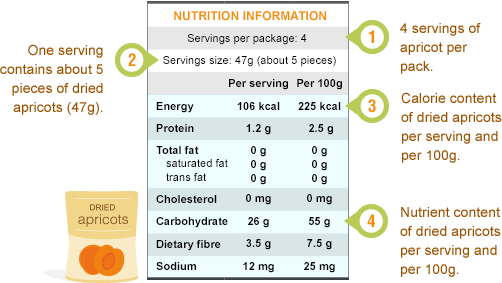
Reading food labels cholesterol
Food Labels: Fat & Cholesterol | Home & Garden Information Center The 2015 Dietary Guidelines for Americans recommends the following intakes of fat and cholesterol every day: total fat—20 to 35% of calories, depending on age and gender (65 grams for the 2,000-calorie intake level used in the Daily Value)* saturated fat—less than 10% of calories** trans fat— keep as low as possible How to read food labels: MedlinePlus Medical Encyclopedia If a label says that a food has 100 mg of sodium, this means it has about 250 mg of salt. You should eat no more than 2,300 mg of sodium per day. This is the amount of sodium that is in 1 measuring teaspoon of table salt. Ask your health care provider if you should have even less. The % daily value is included on the label as a guide. How does reading food labels benefit? - Heimduo Food labels carry useful information to help you make informed choices about what you and your family eat and drink. Most packaged foods are required to have a label with this information, but the information required depends on the food type. How to Read Food Labels for Someone on a Low-Cholesterol Diet Watch on
Reading food labels cholesterol. Making Sense of Food Labels | ADA - American Diabetes Association Trying to figure out nutritional information on labels and packaging isn't easy. The good news is that we can help. These food labels are especially helpful if you use carb counting to plan your meals! If you get tripped up on food content claims, you're not alone. Fat free vs. low fat vs. reduced fat. Low cholesterol vs. reduced cholesterol. Understanding Ingredients on Food Labels | American Heart Association Mar 06, 2017 · These fats raise your bad cholesterol (LDL) and decrease your good cholesterol (HDL). Some experts say you should choose foods with five or fewer ingredients. While this “five-limit rule” has gotten a lot of attention lately, Kris-Etherton said there’s no reason to complicate your label reading to this degree. Reading Food Labels | ADA - American Diabetes Association Reading Food Labels. Understanding Food Labels. It’s time to decode those food claims. ... Low cholesterol vs. reduced cholesterol. It’s confusing, and it can be tough when you’re trying to make the right choices. Put food labels to work. The Nutrition Facts labels on foods are really the key to making the best choices. We’ll cover the ... Reading food labels: Tips if you have diabetes - Mayo Clinic Jun 25, 2021 · Reading food labels: Tips if you have diabetes. Food labels can be an essential tool for diabetes meal planning. ... Nutrients and Daily Value: The label must list the amounts of total fat, saturated fat, trans fat, cholesterol, sodium, total carbohydrate, dietary fiber, sugars, protein, vitamin D, calcium, iron and potassium that are in one ...
Understanding Food Labels in Canada - Unlock Food Oct 15, 2019 · As of December 2005, all major food companies introduced the new nutrition label on their packaged foods. The main part of the new label is the Nutrition Facts Table, which gives you the following information: Calories and 13 nutrients: Fat, Saturated fat, Trans fat, Cholesterol, Sodium, Carbohydrate, Fibre, Sugars, Protein, Vitamin A, Vitamin C, Calcium and Iron. How to Read Food Labels for a Heart-Healthy Diet Partially hydrogenated oil Omega-3 fatty acid Olive oil Butter What's important to know about the first ingredient listed on a label? It's the healthiest. It's in the largest quantity. It's first due to alphabetical order. What words should I look out for that mean sugar? High-fructose corn syrup Agave nectar Dehydrated cane juice All of the above How To Read Nutrition Labels - Mayo Clinic Diet Aim for low in saturated fat, trans fat, cholesterol, sodium, and added sugars. High is 20% or more. Aim high in vitamins, minerals and dietary fiber. 4. Check the ingredients Ingredients are listed by volume. The higher up on the list an ingredient is, the more of it the product contains. Make sure sugar isn't one of the first ingredients listed. How to Read the Nutrition Facts Label on Packaged Foods - WebMD Limit salt to 2,300 milligrams (about 1 teaspoon) daily. If you have high blood pressure, kidney disease, or diabetes, or are African-American or older than 51, your daily limit is lower: 1,500...
How to read food labels Information | Mount Sinai - New York Always check the serving size first. All the information on the label is based on the serving size. Many packages contain more than 1 serving. For example, the serving size for spaghetti is most often 2 ounces (56 grams) uncooked, or 1 cup (0.24 liters) cooked. If you eat 2 cups (0.48 liters) at a meal, you are eating 2 servings. How To Read Cholesterol Labels - HealthyCholesterolClub.com Eating too much unhealthy fat saturated and trans fats can increase your risk for heart disease, high cholesterol, obesity, high blood pressure, type 2 diabetes, and cancer. Saturated fat comes mainly from meat, poultry with skin, whole milk dairy products, coconut and palm kernel oils, and stick margarine. Reading Food Labels for Cholesterol. DR. NIRMAL JOSHI MD 1Drop of ... How to read food labels for cholesterol? This video describes how to read food labels specifically related to cholesterol.Please note that I have done my bes... Reading food labels: Tips if you have diabetes - Mayo Clinic Look for foods with fats, cholesterol and sodium on the low end of the Daily Value; keep fiber, vitamins and minerals on the high end. If your doctor or registered dietitian recommends more or less than 2,000 calories a day, you may need to adjust the percentage accordingly — or simply use the percentage as a general frame of reference.
Understanding Ingredients on Food Labels | American Heart Association These fats raise your bad cholesterol (LDL) and decrease your good cholesterol (HDL). Some experts say you should choose foods with five or fewer ingredients. While this "five-limit rule" has gotten a lot of attention lately, Kris-Etherton said there's no reason to complicate your label reading to this degree.
How to Understand and Use the Nutrition Facts Label | FDA Dietary fiber, vitamin D, calcium, iron ad potassium are nutrients on the label that Americans generally do not get the recommended amount of. They are identified as nutrients to get more of....
How to Read Food Labels : Food Network | Food Network The percent of the Daily Value that is listed on the upper portion of the food label is yet another way to gauge how much saturated fat and cholesterol are in the foods that you buy and eat. If a ...
Food and Recipes Center: Easy, Healthy Recipe Ideas for Your ... - WebMD May 16, 2022 · Healthy recipes for healthy meals, find thousands of delicious recipes.
How to Understand and Use the Nutrition Facts Label | FDA - U.S. Food … Feb 25, 2022 · People look at food labels for a variety of reasons. ... The following label-reading skills are intended to make it easier for you to use the Nutrition Facts labels to make quick, informed food ...
Reading Food Labels | ADA - American Diabetes Association The Nutrition Facts labels on foods are really the key to making the best choices. We'll cover the basics so that these labels make shopping easier for you. You've heard it all. From carb-free to low-carb, to whole and empty carbs, it's hard to know what it all means. Blood sugar highs and lows aren't always easy to understand.
Understanding Food Nutrition Labels | American Heart Association Mar 06, 2017 · When the Nutrition Facts label says a food contains “0 g” of trans fat, but includes “partially hydrogenated oil” in the ingredient list, it means the food contains some trans fat, but less than 0.5 grams per serving. So, if you eat more …
How to Tell if Foods Are Low or High Cholesterol - Verywell Health Each food label should include milligrams (mg) of cholesterol per serving. Don't forget to look at the serving size as well. Sometimes products can seem low in cholesterol, but if you eat more than the recommended servings in one sitting, then you can end up consuming a lot more cholesterol than you intended.
Understanding Food Nutrition Labels | American Heart Association 1 - Start with the serving information at the top. This will tell you the size of a single serving and the total number of servings per container (package). 2 - Next, check total calories per serving and container. Pay attention to the calories per serving and how many calories you're really consuming if you eat the whole package.
How To Read Food and Beverage Labels - National Institute on Aging No label? No problem Although frozen and canned fruits and vegetables have food labels, fresh varieties often do not. You can find nutrition information for fresh vegetables and fruits on the USDA website. Or you can call the U.S. Department of Agriculture's Food and Nutrition Information Center at 301-504-5414.
How does reading food labels benefit? - Heimduo Food labels carry useful information to help you make informed choices about what you and your family eat and drink. Most packaged foods are required to have a label with this information, but the information required depends on the food type. How to Read Food Labels for Someone on a Low-Cholesterol Diet Watch on
How to read food labels: MedlinePlus Medical Encyclopedia If a label says that a food has 100 mg of sodium, this means it has about 250 mg of salt. You should eat no more than 2,300 mg of sodium per day. This is the amount of sodium that is in 1 measuring teaspoon of table salt. Ask your health care provider if you should have even less. The % daily value is included on the label as a guide.
Food Labels: Fat & Cholesterol | Home & Garden Information Center The 2015 Dietary Guidelines for Americans recommends the following intakes of fat and cholesterol every day: total fat—20 to 35% of calories, depending on age and gender (65 grams for the 2,000-calorie intake level used in the Daily Value)* saturated fat—less than 10% of calories** trans fat— keep as low as possible

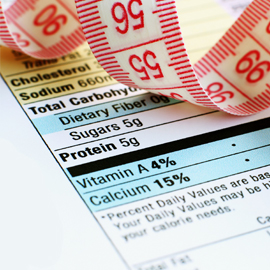

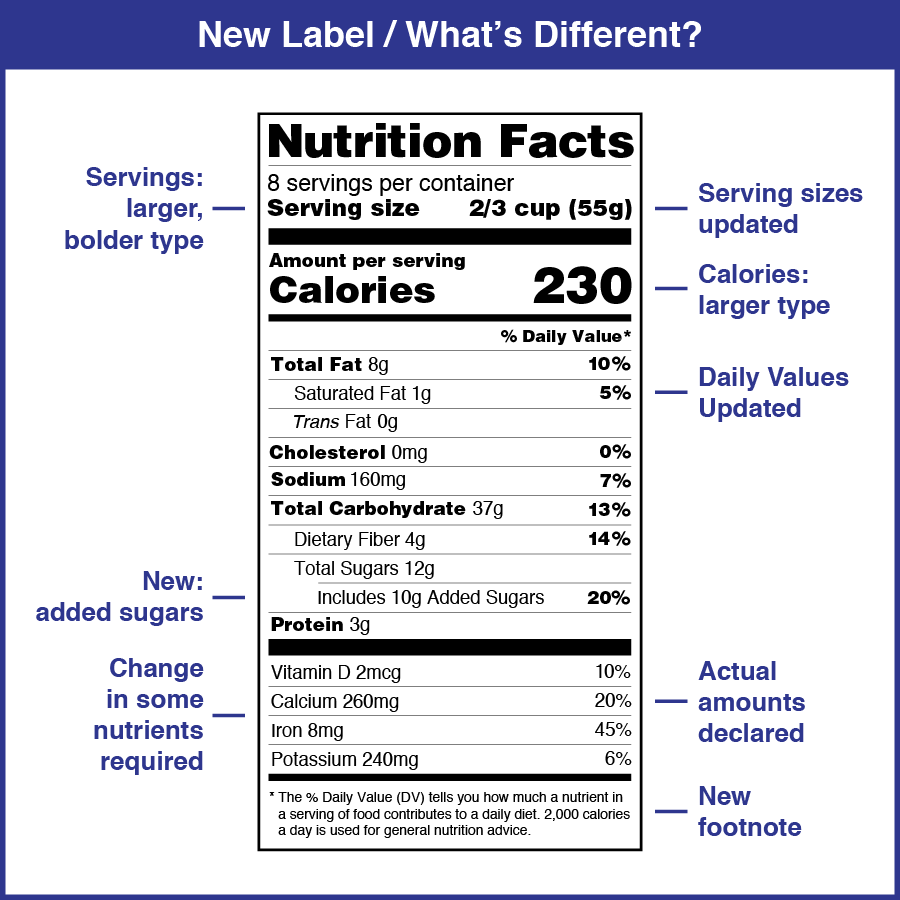





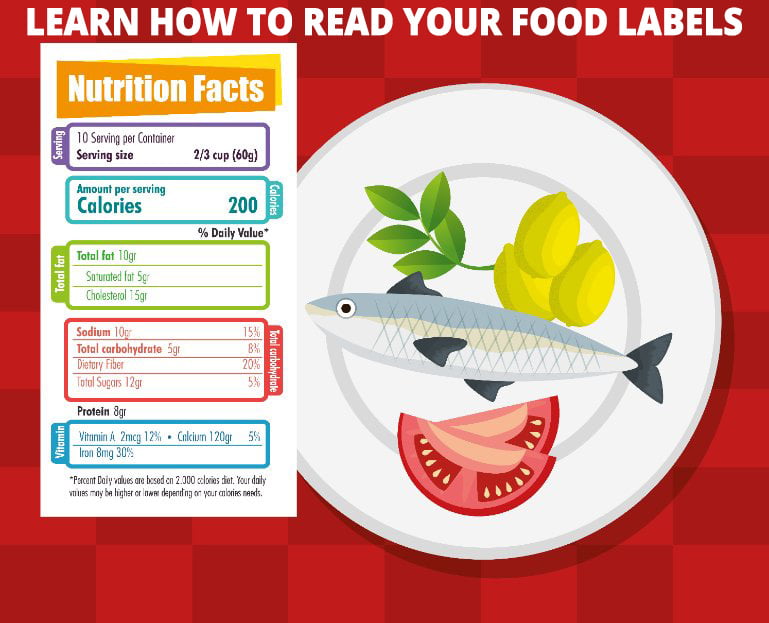



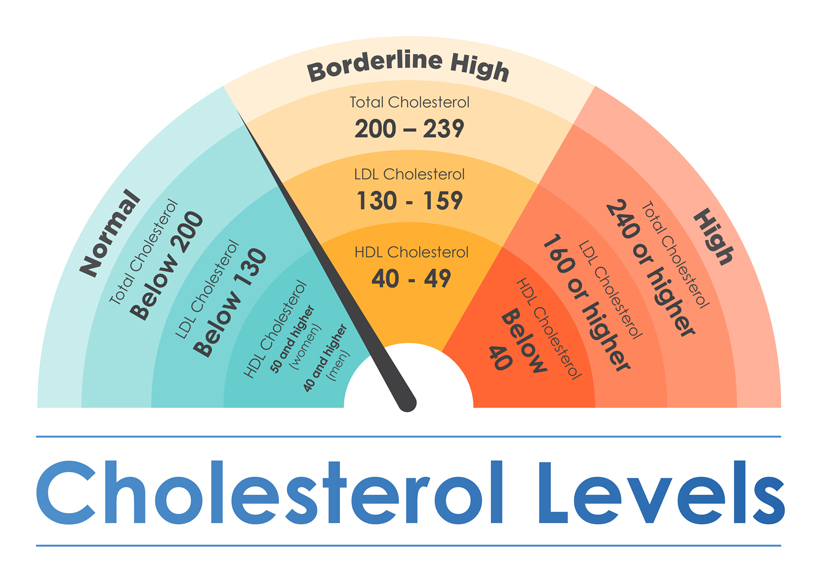


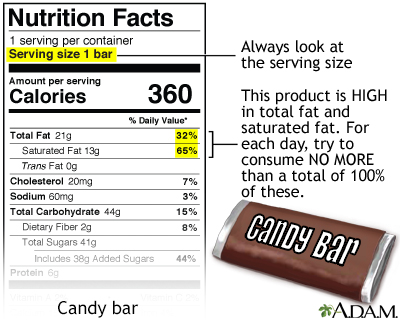
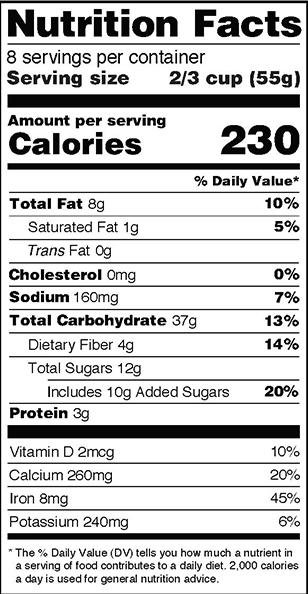

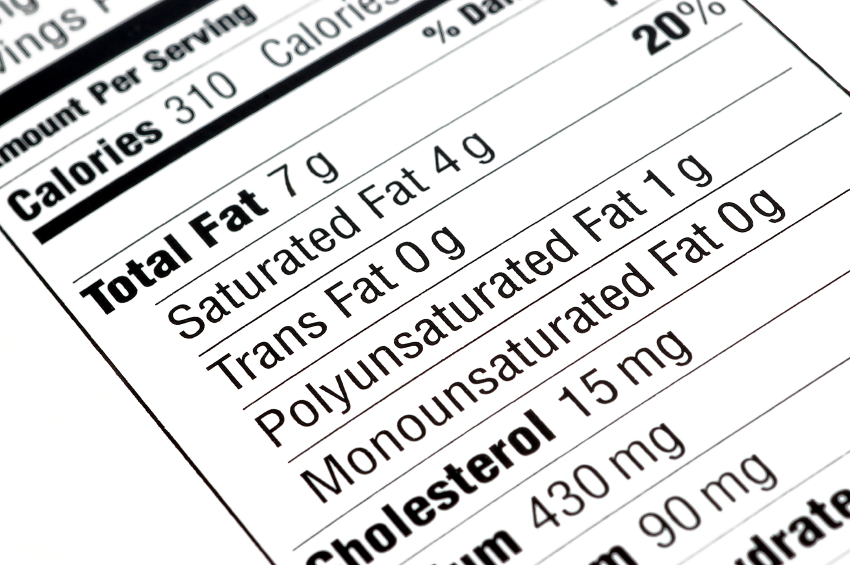
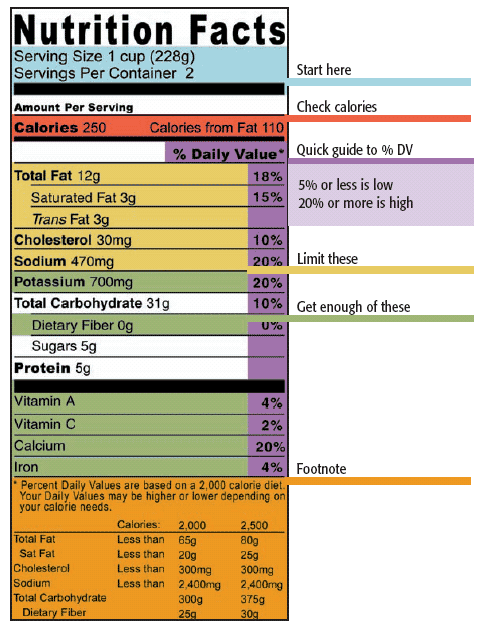
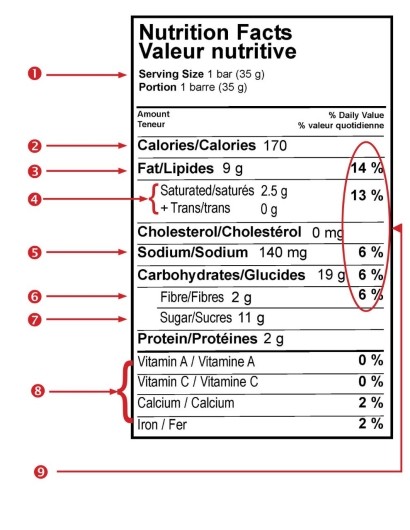
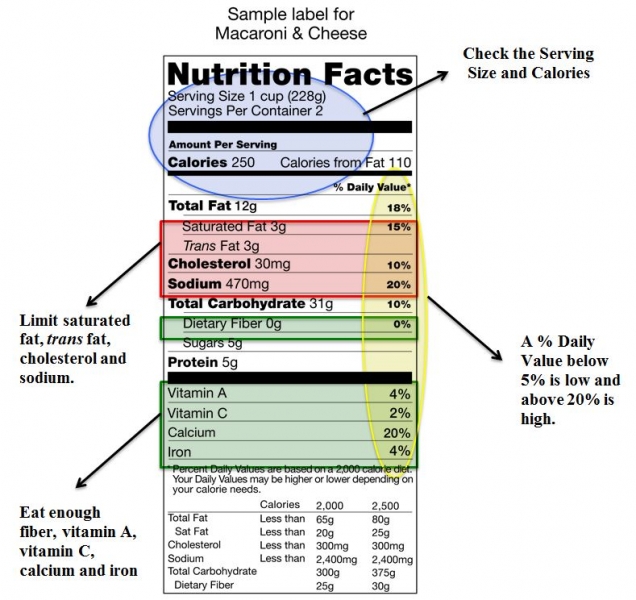
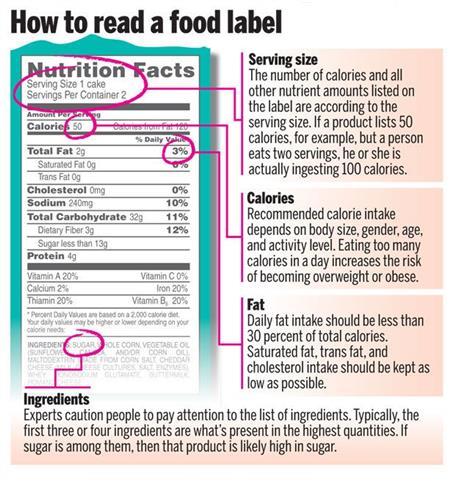




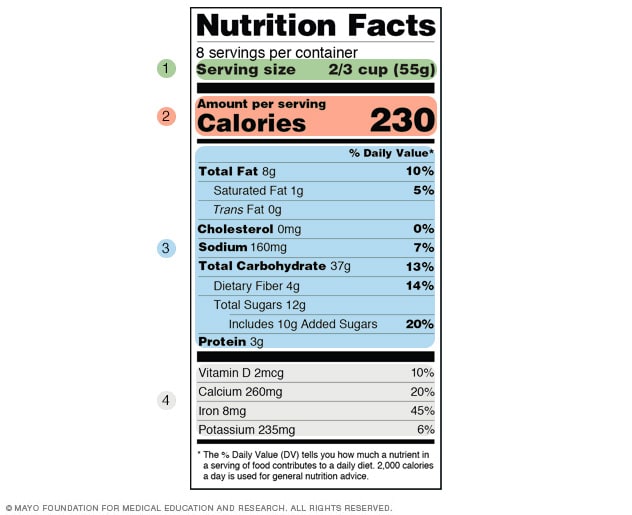

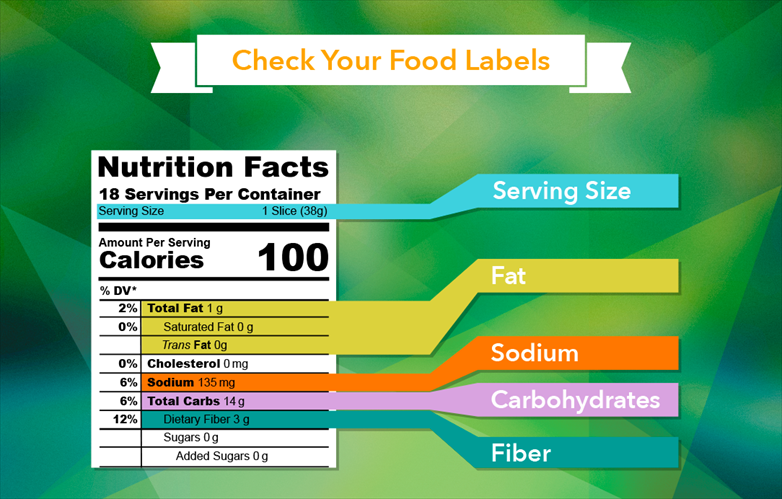









Post a Comment for "44 reading food labels cholesterol"